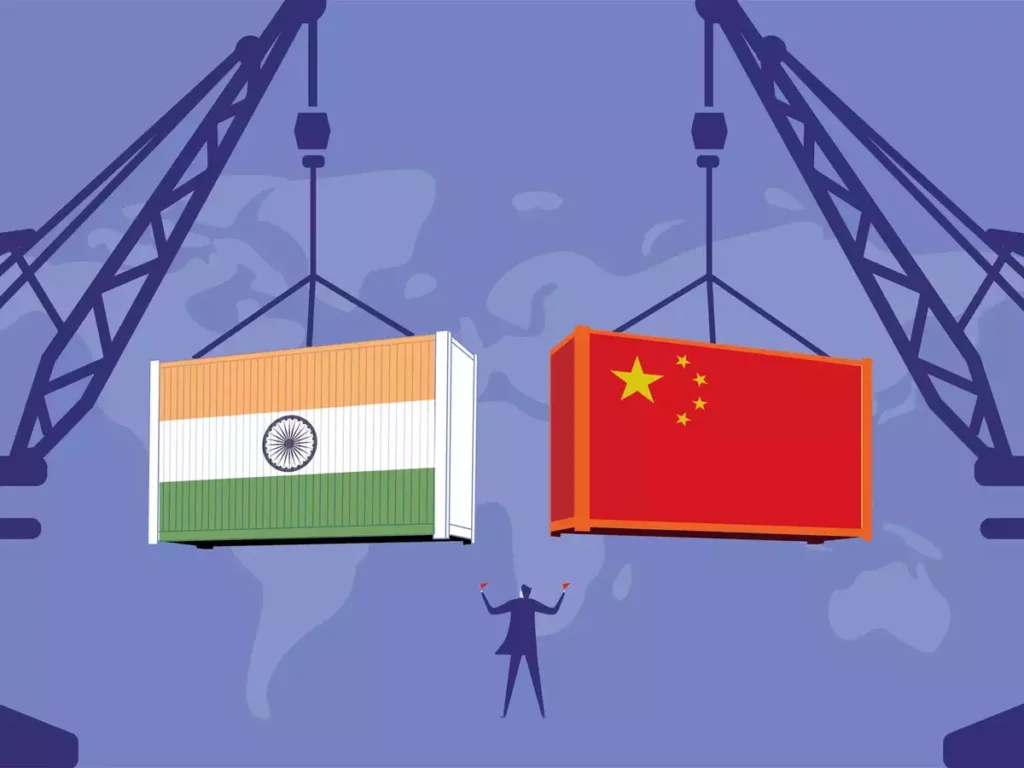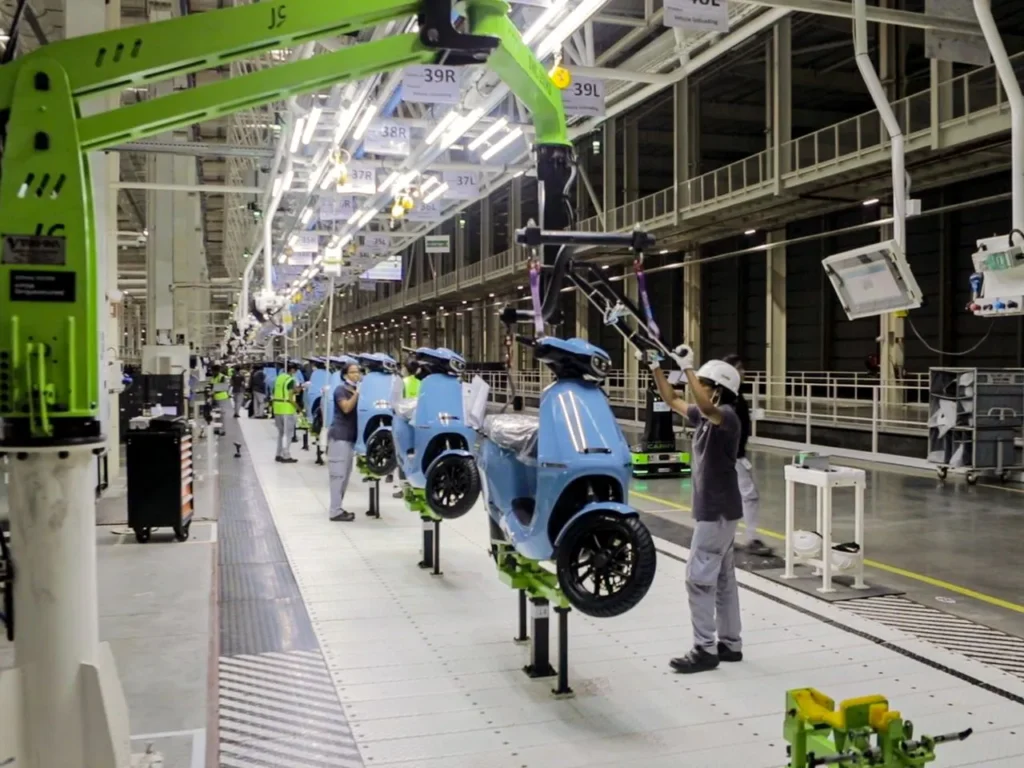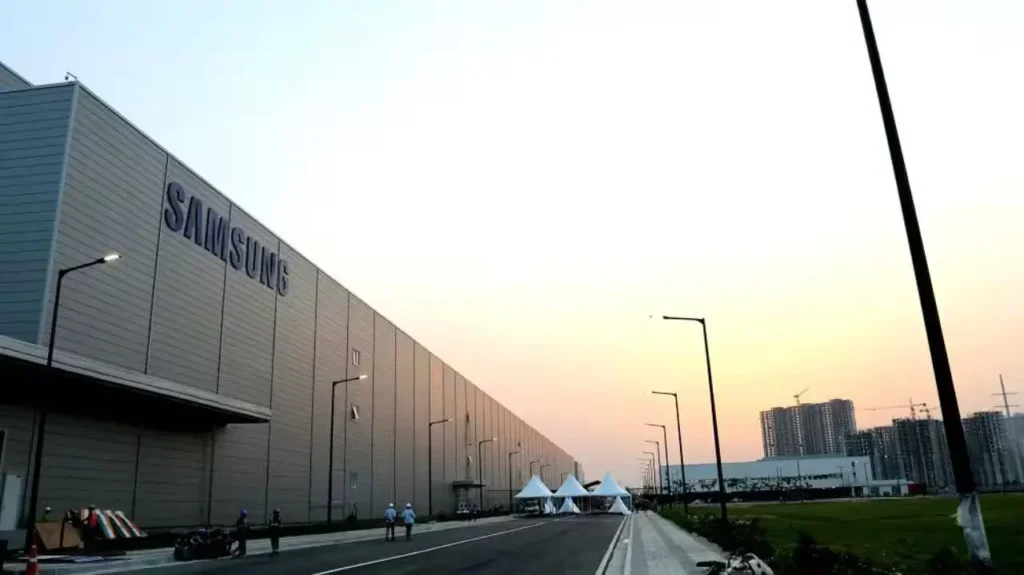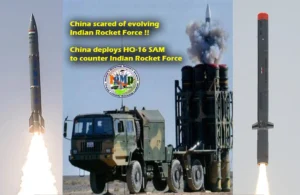Source : The Wall Street Journal

Attention World : China Finally Has a Rival as the Worlds Factory Floor
New Delhi: Western companies are desperately looking for a backup to China as the world’s factory floor, a strategy widely termed “China plus one.”
India is making a concerted push to be the plus one. Only India has a labour force and an internal market comparable in size to China’s. India’s population may be the world’s largest, according to the United Nations, Wall Street Journal reported.
Western governments see democratic India as a natural partner, and the Indian government has pushed to make the business environment more friendly than in the past.
It scored a coup with the decision by Apple to significantly expand iPhone production in India, including expediting the manufacturing of its most advanced model. Signs that India is changing are visible in the sprawling industrial parks in Sriperumbudur, a city in the southern state of Tamil Nadu, WSJ reported.
Foreign manufacturers here have long churned out cars and appliances for the Indian market. They’re now being joined by multinational corporations making goods from solar panels and wind turbines to toys and footwear, all looking for an alternative to China.
In 2021 Denmark’s Vestas, one of the world’s largest wind-turbine manufacturers, built two new factories in Sriperumbudur. Its six assembly lines now assemble hub cells, power trains and other components, stacked high in a storage yard to be shipped across the world, WSJ reported.

Forecasts that India would soon become the second-largest market for turbines sparked Vestas’s expansion. But it was also a conscious effort to diversify away from China, which hosted the bulk of its regional production, especially after repeated lockdowns under Beijing’s zero-Covid policy, said Charles McCall, who oversaw the expansion as senior director of Vestas Assembly India.
“We don’t want all our eggs in one basket in China,” he said.
Some of Vestas’s suppliers have joined it. American contract manufacturer TPI Composites moulds 260-foot-long turbine blades that regularly draw attention as they are shuttled along surrounding highways. It has expanded significantly in India even as it reduces operations in China.
Eventually, 85 per cent of Vestas’s suppliers will be in India, said McCall, who recently left the company.
China still towers over every other country in global manufacturing, a position it cemented when multinationals flooded in after it joined the World Trade Organization (WTO) in 2001. But a growing list of factors has prompted companies to search for a backup. First, there were rising labour costs in China and pressure from the Chinese government to transfer technology to Chinese competitors.
Then there were President Donald Trump’s tariffs on Chinese imports in 2018, Covid lockdowns from 2020 through last year, and now a push by Western governments to decouple their economies from China.
Many countries are competing to be the “plus one,” with Vietnam, Mexico, Thailand and Malaysia in particular contention. India must still overcome entrenched problems that have kept it a bit player in global supply chains. Its labour force remains mostly poor and unskilled, infrastructure is underdeveloped and the business climate, including regulations, can be burdensome.
Manufacturing remains small relative to the size of India’s economy. Nonetheless, after decades of disappointment, it is making progress. Its manufactured exports were barely a tenth of China’s in 2021, but they exceeded all other emerging markets except Mexico’s and Vietnam’s, according to World Bank data.
The biggest gains have been in electronics, where exports have tripled since 2018 to USD 23 billion in the year through March. India has gone from making 9 per cent of the world’s smartphone handsets in 2016 to a projected 19 per cent this year, according to Counterpoint Technology Market Research.

Foreign direct investment into India averaged USD 42 billion annually from 2020 to 2022, a doubling in under a decade, according to central-bank figures.
Since China declared a “no limits” friendship with Russia on the eve of the invasion of Ukraine last year, the US and its allies have stepped up efforts to reduce dependence on China. Through reducing dependence on China. Through “friend-shoring,” the US is “strengthening integration with our many trusted trading partners- including India,” Treasury Secretary Janet Yellen said on a visit there in February.
No company better embodies the bet on India as the next China than Apple. Over the past 15 years, the company built up a state-of-the-art supply chain almost entirely in China to make its laptops, iPhones and accessories. Its presence helped the entire manufacturing sector in China.
The California-based company has assembled low-end iPhone models in India since 2017 and began making its newest, flagship iPhone 14 here within weeks of its launch last year. J.P. Morgan estimates a quarter of all Apple iPhones will be made in India by 2025.
Indian officials hope Apple’s presence will spur others to come. “Very often you have anchor companies who set the trend,” Commerce and industry minister Piyush Goyal said in an interview.
“We believe that this will send a strong signal…to other companies in Europe, America and Japan.” Apple has been pushing suppliers to diversify beyond China after many faced production disruptions during Covid lockdowns. Meanwhile, geopolitical tensions have been growing between the US and China and between Beijing and Taiwan, where Foxconn Technology Group, Apple’s main manufacturer, is based.
Foxconn is set to expand production of iPhones at its existing plant near the Indian city of Chennai. It aims to boost iPhone production to around 20 million units annually by 2024 and roughly triple the number of workers to as many as 100,000, according to people familiar with the matter, The Wall Street Journal has reported.
An Apple spokesman declined to comment. India has made progress in overcoming some barriers to business. In 2014 Indian Prime Minister Narendra Modi unveiled “Make in India,” an effort to boost manufacturing. India has digitized many government services and accelerated the construction of railroads, airports, container shipping ports, and electricity generation.
Piyush Goyal pointed to India’s rise on the World Bank’s ease of doing business rankings and the World Intellectual Property Organization’s global innovation index and a growing number of free trade pacts as evidence “we have now taken…integrating ourselves with other countries far more seriously.”
India introduced tax and customs rebates for exports in 2015 and overhauled them in 2021. The customs rebates were “the trigger point for the entire electronic industry,” said Sasikumar Gendham, managing director of Finland’s Salcomp, the world’s largest maker of smartphone chargers and supplier to Apple.
Since 2014, Salcomp’s Indian workforce has increased sixfold to 12,000 and it aims to hire 25,000 people in the next two years.
With 200 buses to transport workers and plans to build dormitories for 15,000 people, the company’s campus is massive by Indian standards, though not yet by Chinese standards. The facility churns out yet by Chinese standards. The facility churns out about 100 million units every year, compared with its China facility which produces about 180 million units.
For all this progress, it isn’t clear it’s enough to set India apart. Jules Shih, a Chennai-based director of Taiwan’s trade promotion agency, TAITRA, said India has become an easier place to do business, but in many respects still lags behind other countries.
It can take longer to get land and approvals to set up a factory in India and getting visas for expatriate technicians, managers and engineers is time-consuming, Shih said.
“We feel they don’t have a united goal integrated across agencies to make Make in India happen faster,” he said.

In March 2020, India introduced “production-linked incentives” that directly subsidize targeted products, starting with mobile phones and components, pharmaceuticals and medical devices.
Some companies have found the process to claim production-linked incentives to be burdensome. South Korean technology giant Samsung Electronics has been in discussions with authorities over the amount of the rebate. A Samsung India spokesman said the company is committed to being a partner of India and working to make the plan a success.
Labour shortages are emerging in India’s manufacturing hubs, local officials and businesses say. That’s because, unlike in China, many workers are reluctant to relocate long distances in search of work. Trade unions are more potent in India than in China. Work Trade unions are more vital in India than in China.
China encouraged foreign companies to locate supply chains in special economic zones with reduced tariffs on imported components and machinery. By contrast, “Make in India” sought to replace imports with domestically manufactured products by raising import tariffs.
Those tariffs discourage industries that import many components. “India is protectionist in precisely those sectors, goods manufacturing, where the China+1 opportunity arises,” Viral Acharya, an economist at New York University and former deputy governor of India’s central bank, wrote in a report for the Brookings Institution released in March.
In its annual review of India’s economy last December, the International Monetary Fund said its integration into global value chains has stalled.
Manufacturing’s share of Indian economic output has actually shrunk since Make in India was launched, to 14 per cent in 2021, far below that of Mexico, Vietnam and Bangladesh.
Arvind Subramanian, who was Modi’s chief economic adviser from 2014 to 2018, said for every company such as Apple that has embraced India,
several report bad experiences. Even Apple’s investment “wouldn’t have happened without the push from China,” he said.
Amazon.com closed some of its Indian ventures last fall. “We continue to develop and grow the local e-commerce ecosystem,” Amazon said in a statement. commerce ecosystem,” Amazon said in a statement. China’s experience suggests creating lots of
moderately paid jobs for less-educated rural workers, especially women, requires manufacturing.
In Tamil Nadu, a homegrown unicorn, Ola Electric, embodies those hopes. India is the world’s largest market for two-wheeled motorcycles and scooters, and Ola has made a splash with its brightly painted scooters catering to the demand for electric vehicles.
New registrations for electric two-wheelers have grown more than tenfold over the past two years to 684,273 in the latest financial year that ended March 31, according to the Council on Energy, Environment and Water, a New Delhi-based think tank.
Ola is making half a million electric scooters a year from its new plant. It plans to quadruple factory floor space, including two acres reserved for an indoor forest. The company says it will start making electric cars in early 2024.
The airy plant has an almost all-female workforce, from security guards to workers wielding spray guns of paint, to those who test-ride the final product.
“Initially, their parents were hesitant to let them work in factories,” said Jayaraman G, Ola’s associate director of corporate affairs.
“No more. In the last year, they saw how the situation changed financially-from paying for the education of their siblings to helping build two- or three-room apartments. It’s a proud moment for their families.” China Finally Has a Rival as the Worlds Factory Floor China Finally Has a Rival as the Worlds Factory Floor China Finally Has a Rival as the Worlds Factory Floor China Finally Has a Rival as the Worlds Factory Floor China Finally Has a Rival as the Worlds Factory Floor China Finally Has a Rival as the Worlds Factory Floor China Finally Has a Rival as the Worlds Factory Floor China Finally Has a Rival as the Worlds Factory Floor China Finally Has a Rival as the Worlds Factory Floor China Finally Has a Rival as the Worlds Factory Floor China Finally Has a Rival as the Worlds Factory Floor China Finally Has a Rival as the Worlds Factory Floor China Finally Has a Rival as the Worlds Factory Floor China Finally Has a Rival as the Worlds Factory Floor China Finally Has a Rival as the Worlds Factory Floor China Finally Has a Rival as the Worlds Factory Floor China Finally Has a Rival as the Worlds Factory Floor China Finally Has a Rival as the Worlds Factory Floor China Finally Has a Rival as the Worlds Factory Floor IgMp






